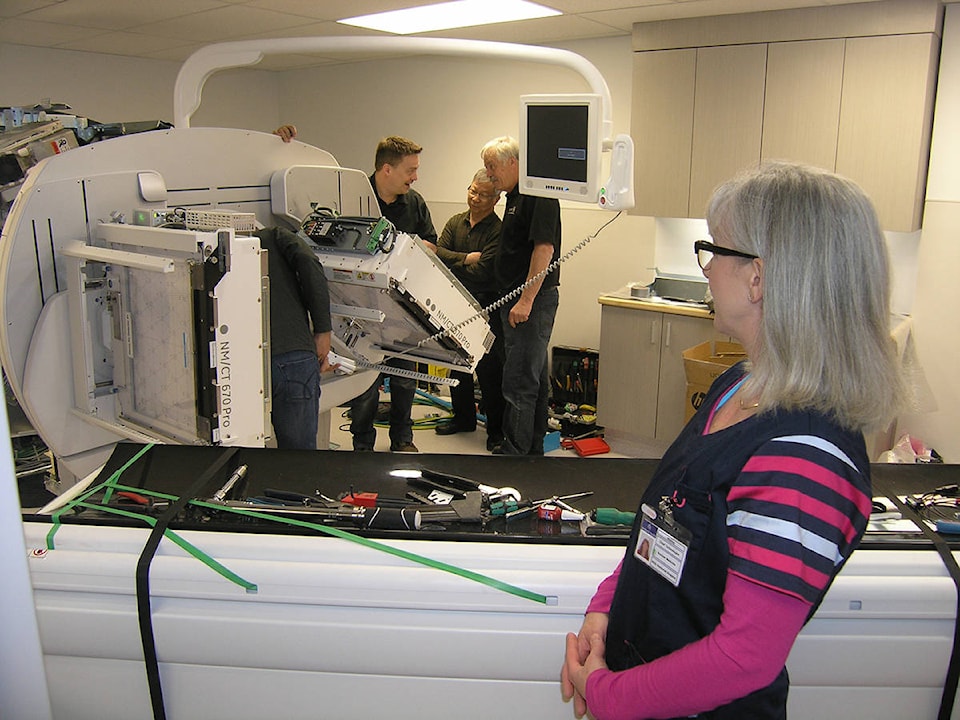Sandspit water taxi?
Islanders are floating the idea of a subsidized, walk-on water taxi to better connect Sandspit with Graham Island at night.
The proposal is to run evening, there-and-back sailings for a trial period of two or three years.
It’s unclear yet whether the water taxi would go between ferry terminals, or between the Queen Charlotte and Sandspit harbours.
Queen Charlotte Mayor Greg Martin pitched the idea to BC Ferries months ago together with other members of the North and Central Coast Ferry Advisory Committee, which also includes Queen Charlotte Councillor Jo-Anne MacMullin and Skidegate Chief Councillor Billy Yovanovich.
Imaging improves at Mills
Mills Memorial Hospital is adding a pair of advanced imaging machines.
The Terrace hospital is expected to receive its first magnetic-resonance imaging (MRI) machine this summer, and last week it received a special form of computed tomography (CT) scanner.
Shelley Fischer, chief nuclear medicine technologist at the hospital, said the new imaging equipment provides far more detail, allowing staff to better diagnose things like heart problems or the spread of cancer in bone.
“We’ll be able to diagnose what’s going on and exactly where it’s going on,” said Fischer, noting that the new SPEC CT and MRI machines will reduce the need for northwest B.C. residents to travel south.
Children’s choice
If North Coast kids could vote, they would have backed the adults’ decision on May 9: re-electing Jennifer Rice of the B.C. NDP.
But their second choice would be a B.C. Green, not a B.C. Liberal, with a closer finish between all three.
Across Haida Gwaii, elementary and high school students cast pretend ballots in a province-wide Student Vote Day on May 8. Organized by the charity CIVIX, the mock election came after students learned how elections work, and what policies B.C.’s political parties actually ran on this year.
Over 170,000 students voted riding by riding in the mock election, which would have resulted in a 60-seat NDP majority government, a 14-seat B.C. Green Opposition, and a B.C. Liberal caucus of 12.
Wheel-y thinking
Islands cyclists gave some tips last week to planners tasked with making Queen Charlotte’s first bicycle network plan.
Maps, markers, and Post-It notes were out at a May 10 public meeting in the village office, where residents spoke with two planners from the Canadian consulting firm Urban Systems.
Besides ideas for Queen Charlotte — things like adding local trail connectors, paving rougher roads, and installing covered bike racks (with side hitches for dogs) — residents suggested ways to boost cycle tourism and safer cycling between all Haida Gwaii communities. On tourism, some of the tips went right off-road: riders suggested mountain bikes might be a good fit for islands forestry roads, and ‘fat’ bikes for the beaches.
Sponge Bot
Islanders with zippy Internet can dive among Hecate Strait’s rare glass sponge reefs.
Until May 23, a team of Fisheries and Oceans scientists will be live-streaming and recording videos from a scientific submersible operated from the Canadian Coast Guard ship John P. Tully.
Believed to have died out some 40 million years ago until they were found in the Hecate Strait in 1987, the glass sponge reefs will soon be covered by a new Marine Protected Area. Up to 9,000 years old and eight stories tall, they are made of sea sponges with fragile silica skeletons.
